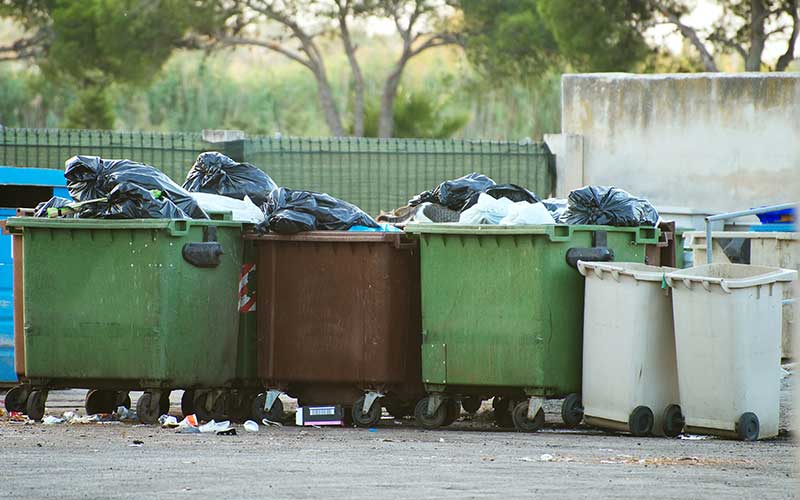
What if I told you that I wanted to build a facility in your town that would cost taxpayers a lot to construct, but create only a few low-quality jobs? Once operational, it would contaminate the air and groundwater and poison neighbors’ wells for decades. What’s more, this contamination would be largely ignored, and probably never remediated or acknowledged.
Sure, the facility would create a few short-term gains for its host community, but it would result in much higher long-term costs to public health and the environment (including contributing significantly to climate change). It would be a horrible nuisance, with significant noise, dust, traffic, and litter. It would smell and look terrible, driving away other businesses and devaluing homes in the area.
Oh, and occasionally it would catch on fire. Sometimes for weeks or months at a time.
I’m guessing by now you’re thinking that you would never want such a facility in your city or town. But the above description fits every landfill or waste incinerator in the country. You had no idea? Of course you didn’t. Neither did I, ten years ago. The solid waste industry has done a fantastic job of convincing us that large landfills and incinerators are at best benign, and at worst necessary evils in a modern economy. Landfill and incinerator companies’ very existence depends on perpetuating this wasteful and dangerous lie, but nothing could be further from the truth.
I’m sure you’re thinking, what’s the alternative then? Our trash has to go somewhere. But what if it doesn’t? Zero Waste programs have been shown to outperform landfills and incinerators on every measure, whether it’s job creation, impact on the environment and public health, resource or energy conservation, sustainability, or real costs to consumers and municipalities.
Landfills and incinerators perpetuate the 20th-century “cradle-to-grave” economy, while Zero Waste programs have the potential to shift us to a 21st-century “circular” economy. And it is well past the time for the Commonwealth of Massachusetts (and all of New England) to get serious about Zero Waste.
A Deep Dive into How We Handle Our Trash
Getting us to a Zero Waste world won’t be easy, but I’m sure you can agree that the rewards – less air and water pollution, fewer public health issues and the costs that go with them, fewer climate-damaging emissions – are worth the effort. That’s why we’re launching this blog series. To solve a problem, you have to understand the problem, and how we handle our waste is one that is multi-layered and complex.
In future posts, we’ll look at what is in our solid waste, how it’s collected and disposed of in different parts of the state, what laws we have and why they are not working, why landfills and incinerators are so dangerous and ill-conceived, and the inequities inherent in our current system.
Then we will explain what Zero Waste is, what Zero Waste is not, and how specific Zero Waste programs, if adopted (and enforced!) in Massachusetts would solve our trash problem – and the health, climate, and pollution problems that go along with it.
We hope that this series will not only help you learn a great deal about our waste system but that it galvanizes you to take action with us in the months to come. For decades we have dabbled in recycling, played with composting pilots and researched reduction and reuse, rather than making real change. It’s past time to stop messing around in Massachusetts, however.
Stay tuned for our next blog. And, in the meantime, be sure to sign up for action alerts so you’ll be the first to know when you can make your voice heard on how to clean up our trash for good.



